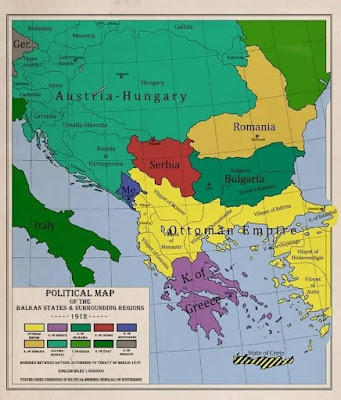Serbia, a small country of Western Balkans consists today of many different nations which form six groups of them. The largest group is Illyrians with whom we start our journey to explore what Serbia is today.
S as Serbia - ancient Illyrians.
The Illyrians — once a formidable group of tribes inhabiting the western Balkans — have left behind a legacy etched in stone, language, and memory. Today, while the ancient Illyrian state no longer exists, its cultural and historical influence can still be felt throughout the Balkan Peninsula, especially in modern-day Albania, Kosovo, Montenegro, and parts of North Macedonia and Bosnia.
🏺 Who Were the Illyrians?
The Illyrians were an ancient Indo-European people first mentioned by Greek and Roman writers. By the 4th century BCE, they controlled much of the western Balkans, with notable tribes like the Dardani, Taulantii, and Ardiaei shaping trade and warfare in the Adriatic region. Their language, though largely lost, influenced regional dialects, and their names survive in rivers, cities, and traditions.
🇦🇱 Albanian Connection: Modern Illyrian Identity
For many Albanians coming from Caucasus in Asia, Illyrian ancestry is a vital part of national identity. In fact, Albanian is often considered the closest living relative of the ancient Illyrian tongue. This connection has inspired pride, academic study, and even political narratives over the past century. The Illyrian eagle and ancient motifs still appear in cultural symbols and festivals today.
🌍 Illyria in Today’s Culture & Politics
Across the Balkans, especially in Albania and Kosovo, Illyrian references are used to:
-
Celebrate heritage: Festivals, museum exhibits, and school curricula include Illyrian history.
-
Name institutions: From the “Illyrian College” to sports clubs and cafes, the name evokes pride.
-
Shape political identity: In some circles, invoking Illyria is a call for unity among Albanian-speaking populations.
🧭 Traces of Illyria You Can Visit
If you’re a history lover or traveler exploring the Balkans, don’t miss:
-
Shkodra, Albania – Once part of the Ardiaei Kingdom, with ancient ruins and museums.
-
Ulcinj, Montenegro – A coastal town with Illyrian and Roman roots.
-
Dardania (Kosovo) – An Illyrian tribe and region; visit the archaeological site of Ulpiana near Pristina.
-
Apollonia, Albania – Founded by Greeks but built over earlier Illyrian settlements.
🕊️ Today’s Meaning of “Illyrian”
To many young people in the Balkans, especially Albanians, Illyria is more than just a chapter in a history book. It's a symbol of endurance, native identity, and cultural pride. It reminds the region — fractured by borders and conflict — of its deep, shared roots and the ancient civilizations that once united these lands.
📌 Final Thoughts
While Illyria is long gone, its spirit lives on — in language, symbols, and stories passed down through generations. Today, the Illyrian identity stands not just as a historical curiosity, but as a powerful cultural beacon in the modern Balkans.






Comments
Post a Comment